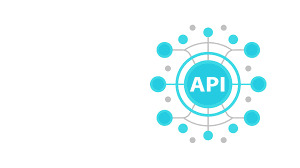#Cheque Printing Writing Software
Explore tagged Tumblr posts
Text
Advantages of Cheque Printing Software
Cheque printing software allows a business to print cheques in bulk for various users with different bank accounts and other details. It helps a company to reduce expenditures and increase profits. The software works in various formats and is compatible with almost any printer. It is easy to use and can be integrated with other financial software systems for further processing. This software has high security measures to prevent theft of data and misuse by unauthorised persons.

The best cheque writing software offers a number of advantages including the ability to handle multiple accounts and banks, printing multiple cheques at once, and providing detailed reports on all activity. It also allows businesses to customize cheques and include a logo or signature. Additionally, the software can support multi-lingual cheques and currencies. The software can also be used to process direct deposits and pay invoices.
One of the benefits of this type of software is that it can save a lot of time by eliminating manual processes. It can also help businesses to avoid losing important information by backing up data regularly. It can also allow for the integration of multiple bank accounts and support international payments.
Another benefit is that it can be used by any size of company. This is because it is not linked to a specific platform and is compatible with most printers. It can also print multiple cheques per page and supports the use of blank cheque stock and MICR encoding. It can even create ACH files for direct deposit.
youtube
SITES WE SUPPORT
Postal API Software – Wix
0 notes
Text
#cheque printing software#cheque writing software#cheque printing software uae#cheque printing software dubai
0 notes
Text
Top Benefits of Using a Cheque API for Businesses and Financial Institutions

In an era dominated by digital transactions and automation, the need for efficient, secure, and scalable payment solutions has never been more critical. While electronic fund transfers and real-time payments are becoming increasingly popular, cheques still play a vital role in business and financial transactions—especially for high-value payments, vendor settlements, and B2B operations. A Cheque API offers a modern solution to automate and streamline cheque issuance, processing, and management for businesses and financial institutions.
In this comprehensive guide, we’ll explore the top benefits of using Cheque APIs, how it enhances operational efficiency, reduces costs, improves compliance, and integrates with modern financial systems. Whether you're a small business owner, fintech startup, or enterprise-level financial institution, this article will help you understand how Cheque APIs can future-proof your payment workflows.
What is a Cheque API?
A Cheque API (Application Programming Interface) is a software interface that allows businesses to automate the process of creating, printing, mailing, tracking, and managing cheques through a secure and programmable platform. It integrates with accounting software, enterprise resource planning (ERP) systems, or custom applications to offer seamless cheque-related functions.
Instead of manually writing cheques or relying on traditional banking channels, a Cheque API enables you to send payments with a few lines of code—reducing human errors, speeding up payment cycles, and ensuring full traceability.
1. Automation of Cheque Printing and Mailing
✅ Why it Matters:
Manual cheque writing and mailing can be time-consuming, error-prone, and resource-heavy. By using a Cheque API, businesses can automate this entire process—from payment approval to cheque dispatch.
💡 Benefit:
Reduces manual workload: No need for printing, signing, or envelope stuffing.
Improves accuracy: Eliminates data entry errors.
Enhances scalability: Process thousands of cheques with minimal overhead.
🧠 Example Use Case:
A payroll department can integrate a Cheque API to automatically send out physical paychecks to remote employees or contractors who prefer non-digital payments.
2. Improved Security and Fraud Prevention
✅ Why it Matters:
Cheque fraud is still a significant concern, especially in sectors like real estate, finance, and healthcare. A Cheque API offers advanced security measures such as encryption, digital signatures, audit trails, and secure printing practices.
💡 Benefit:
Encrypted data transmission ensures sensitive information is secure.
Secure check stock and MICR printing reduce the risk of forgery.
Tamper-evident envelopes and tracking enhance trust.
🧠 Example Use Case:
Financial institutions can use a Cheque API with built-in fraud detection tools to screen unusual payment patterns and prevent unauthorized disbursements.
3. Cost Reduction and Operational Efficiency
✅ Why it Matters:
Manual cheque issuance involves multiple steps—paper, ink, envelopes, postage, and labor. These costs add up quickly, especially for companies processing large volumes.
💡 Benefit:
Eliminates hardware needs: No printers, ink, or paper inventory required.
Saves on mailing and postage: Outsourced mailing via API providers can be cheaper.
Reduces administrative workload: Free up staff to focus on strategic tasks.
🧠 Example Use Case:
A medium-sized law firm can save thousands annually by automating settlement cheque distribution using a Cheque API service.
4. Real-Time Tracking and Reconciliation
✅ Why it Matters:
Traditional cheque systems often lack transparency. Tracking a payment involves calling banks, emailing support, or manually checking account statements.
💡 Benefit:
End-to-end cheque tracking from dispatch to delivery.
Automated reconciliation with financial software.
Digital audit trails for every payment.
🧠 Example Use Case:
An accounting team can reconcile issued cheques with invoices in real-time using API-generated status updates and webhook notifications.
5. Integration with Accounting and ERP Systems
✅ Why it Matters:
Modern finance teams rely on tools like QuickBooks, Xero, Netsuite, and SAP. Manual cheque issuance disrupts workflow continuity.
💡 Benefit:
Seamless integration with platforms like QuickBooks, FreshBooks, and Zoho.
Triggers and webhooks automate actions like status updates and reporting.
Custom API endpoints for different departments and use cases.
🧠 Example Use Case:
An e-commerce business can integrate their ERP system with a Cheque API to issue vendor payments automatically after fulfillment or invoice approval.
6. Enhanced Compliance and Record-Keeping
✅ Why it Matters:
Regulatory bodies like FINTRAC, SOX, and PCI-DSS require transparent and auditable payment records. Manual cheque systems lack this granularity.
💡 Benefit:
Timestamped records for each transaction.
Digital backups of issued cheques.
Easier audits and regulatory compliance with financial laws.
🧠 Example Use Case:
A healthcare organization ensures HIPAA-compliant financial documentation by using a Cheque API with encrypted storage and secure audit logs.
7. Faster Payment Turnaround Time
✅ Why it Matters:
Delayed payments can strain vendor relationships, lead to penalties, or disrupt service continuity.
💡 Benefit:
Same-day cheque processing and dispatch.
APIs trigger payment workflows instantly.
Reduces cheque issuance time from days to minutes.
🧠 Example Use Case:
A construction company can instantly issue urgent payments to subcontractors through an API-based cheque dispatch after milestone approval.
8. Customization and White-Labeling
✅ Why it Matters:
Maintaining brand identity in all customer and vendor communications is essential for trust and professionalism.
💡 Benefit:
Custom-branded cheque templates with logos and brand colors.
White-labeled envelopes for uniform correspondence.
Personalized messaging for recipients (e.g., payment notes).
🧠 Example Use Case:
A fintech startup uses a white-labeled Cheque API to build trust with customers by sending branded refund cheques.
9. Remote Access and Cloud-Based Control
✅ Why it Matters:
With hybrid work models and distributed teams, cloud-based cheque issuance is more critical than ever.
💡 Benefit:
Issue cheques from anywhere, anytime.
Role-based access control for teams.
Admin dashboards for real-time visibility and management.
🧠 Example Use Case:
A nonprofit can issue grant cheques remotely to global recipients without relying on in-office staff.
10. Scalability for Growing Businesses
✅ Why it Matters:
As businesses grow, cheque volume may increase exponentially. Manual systems can’t keep up.
💡 Benefit:
Elastic infrastructure to support 10 to 10,000 cheques per day.
API rate limits and batching options for high-volume sending.
Support for recurring payments, bulk uploads, and templates.
🧠 Example Use Case:
A franchise business uses a Cheque API to handle royalty payments to 200+ locations every month automatically.
11. Global Cheque Delivery and Cross-Border Capabilities
✅ Why it Matters:
International vendors or clients may require physical cheques due to local banking practices or legal requirements.
💡 Benefit:
Supports multi-currency cheques.
Global printing and mailing via local facilities.
Compliance with international postal and cheque standards.
🧠 Example Use Case:
An educational publisher sends royalty cheques to authors in different countries using a global cheque API provider.
12. Business Continuity and Disaster Recovery
✅ Why it Matters:
In the event of office closures, natural disasters, or pandemics, having off-site cheque management is critical.
💡 Benefit:
Redundant infrastructure ensures cheque issuance continues uninterrupted.
Cloud backups protect data and transaction records.
Business continuity planning becomes seamless.
🧠 Example Use Case:
A university finance department continues to issue scholarship cheques during lockdowns through cloud-integrated cheque APIs.
13. Eco-Friendly and Paper Reduction Options
✅ Why it Matters:
Many businesses are focused on sustainability. Cheque APIs can offer hybrid solutions to reduce waste.
💡 Benefit:
Eco-certified printing options.
Digital delivery tracking minimizes duplicate printing.
Option to transition to e-cheques or EFT gradually.
🧠 Example Use Case:
A government agency reduces environmental impact by using APIs to issue only essential physical cheques, while others are handled digitally.
Choosing the Right Cheque API Provider
When selecting a Cheque API solution for your business or institution, consider these key factors:
Security compliance (PCI-DSS, SOC 2, HIPAA if applicable)
Ease of integration with your current systems
API documentation and developer support
Customization and branding options
Global coverage and multi-currency support
Delivery time and tracking capabilities
Pricing and scalability
Some popular Cheque API providers in 2025 include:
Lob.com
Checkflo
PostGrid
Print & Mail APIs by Click2Mail
Online Check Writer
Final Thoughts
A Cheque API transforms traditional cheque processing into a modern, efficient, and secure operation. For businesses and financial institutions, it enables streamlined payments, minimizes errors, reduces operational costs, and ensures compliance—all while maintaining the flexibility of cheque-based transactions.
Whether you’re managing payroll, vendor payments, customer refunds, or disbursements, automating the cheque issuance process through an API is a strategic move that drives digital transformation while respecting legacy systems.
Start by exploring providers that match your industry needs, test API integrations with your software stack, and scale your cheque operations with confidence in 2025 and beyond.
youtube
SITES WE SUPPORT
Mail & Print Letters – Wix
0 notes
Text
Free Cheque Writing Software UAE: Smart Tools for Smart Businesses
Introduction In the UAE, where paper cheques remain a common business transaction method, using cheque writing software can simplify payment processes—especially when you don’t want to invest in premium tools.

Challenges in the UAE Market
Complex banking standards
Language and format differences
Need for Arabic-English dual templates
Regional cheque fraud risks
Free Software Options (UAE-Compatible)
Online Check Writer: Offers regional support with UAE bank templates
Cheque Print Pro (Basic Version): Localized printing templates for UAE banks
GnuCash: May be customized for cheque use with some effort
Excel-Based Templates: Free downloads customized for UAE banks
Features to Look For
MICR line and layout compliance
Integration with UAE bank formats
Arabic/English language support
Backup and export functionality
Security Considerations Ensure the tool offers encryption and limits access to sensitive data, especially for cloud-based options.
Conclusion Free cheque writing software in the UAE helps reduce manual errors and improve payment tracking. For startups and SMEs, it’s a practical way to streamline operations while staying cost-effective.
youtube
SITES WE SUPPORT
market cheque mail – Blogger
0 notes
Text
Cheque Printing Software
print your cheques with our cheque printing software, instead of writing by hand.
This software helps you to organize and print cheques instead of writing by hand. It changes amounts from numbers to words automatically and saves entered payee names to use in the future. Printed cheques put a professional impression on your suppliers as well as a banker. Just select or enter party name, enter the amount in numbers, tear cheque leaf and put into the printer and have the honor of printed cheques.
Main Benefits of this Cheque Printing Software
Print Cheque of all banks FastCheque is a Cheque Printing Software that can be used to print Cheques. It prints on any bank cheque leaves with ease. Different cheque formats of banks are pre-defined and stored in the software to print with accurate alignment automatically.
Positive Impression Printed Cheques put a professional impression on your suppliers and bankers when your cheques are offered to them, Printed Neat & Clean with no handwriting complaints. Once you will start signing printed cheques, you will not like to issue handwritten cheques. Avoid Mistakes The amount written in numbers & written in words might be different, But in this case, you will enter the amount in numbers and the System will convert it into words automatically. Once you issue any cheque, the party name will be saved automatically for future use.
Batch Cheque Printing Multiple PDC cheques for installments etc can take a lot of important time. With Our Cheque Printing System, Printing 100s of cheques will be in a few clicks. Enter party name, choose 1st cheque date, total cheques, interval by month/ days & click to prepare cheque list & print all.
Cheque Layouts FastCheque has an inbuilt cheque designer, which lets you change the design of the cheque leafs. A very user-friendly interface, in which you can just click and drag the fields to specify the position where the party name, amount, date, etc. has to be printed. It is so easy, you can't expect anything easier.
Import Excel File & Print You can import cheque Data from an Excel File. With a few clicks, you can import hundreds of cheque records in FastCheque with speed and ease. Then Put a bunch of Cheque leafs and Click Print to get all of the printed and have transaction details saved.
Cheque Reports Yes, you can track the cheque details using our smart reporting system. You can produce reports Date wise, Bank wise, Party wise, etc. All reports are re-designable easily. You can put your Company Logo by yourself on reports.
Very User-friendly It just takes 10 minutes to learn and start printing cheques with this software. The User interface is polished with years of experience and feedback from 100s of existing customers. You will really love the user interface.
For More Information, Please call: Balbir Singh Mob: 052-9957352 Tel: 04 421 cheque printing software 6577 Delicate Software Solutions
Dubai, UAE https://www.www.delicatesoft.com/cheque-printing-software.html
0 notes
Text
Importance of Mail Stop in a Mailing Address
Mail stop codes are a critical component of large organizations and institutions that manage significant amounts of internal mail. While traditional mailing addresses suffice for smaller businesses and personal use, larger organizations often require more granular mail routing systems. A mail stop ensures that mail reaches its intended recipient quickly and accurately by specifying the department or section within a large building or campus.

What is a Mail Stop?
A mail stop is a unique code or identifier that acts as an internal routing mechanism for mail delivery. It is typically used in businesses, educational institutions, and government organizations with multiple departments or floors within a single location. The mail stop is usually added to the main mailing address to ensure that the mail carrier or internal mail room knows exactly where to deliver the item.
Importance of Mail Stop in Mailing Systems
The importance of a mail stop in a mailing address lies in its ability to streamline mail delivery processes. Without a mail stop, internal mailrooms would have to manually sort and distribute mail based solely on the recipient's name or department. In large organizations with hundreds of employees or departments, this could lead to delays, misplaced mail, or lost items. By using a mail stop, organizations can eliminate these inefficiencies and ensure that mail is delivered to the correct location promptly.
Key Benefits of Using a Mail Stop
Prevents Lost Mail: In a large organization, delivering mail based solely on an employee’s name could lead to errors, especially when multiple people share the same name. A mail stop adds an additional layer of specificity, ensuring the right recipient gets the mail.
Increases Efficiency: Mail stops are crucial for large organizations where inter-departmental mail is frequent. The code helps streamline mail distribution, allowing mailrooms to route correspondence directly to the correct department or office without manual sorting.
Improves Internal Communication: With quicker mail routing, internal documents, memos, and reports can be sent and received faster, improving communication within the organization.
Reduces Operational Delays: For businesses and institutions where timely communication is essential, such as in hospitals or law firms, mail stops can reduce delays in critical correspondence.
Use Cases of Mail Stop Code Systems
Large Corporations: Multi-floor buildings and complex departmental structures often require mail stops for efficient communication.
Universities: Campuses with multiple buildings, faculty departments, and administrative offices can benefit from mail stops to streamline inter-departmental communication.
Government Agencies: To manage high volumes of official documents between departments, mail stops simplify distribution.
Healthcare Institutions: Hospitals and clinics rely on efficient mail systems, and mail stops ensure critical documents are routed to the correct personnel.
How to Include a Mail Stop in Your Address
Including a mail stop in your address format is straightforward. Typically, the mail stop is placed below the recipient's name and before the main address. For example:
John Doe Mail Stop: ABC123 123 Main St City, State ZIP Code
This clear and specific address ensures that the mail is delivered first to the central location, then routed internally using the mail stop.
Conclusion
Mail stops are an integral part of mail management in large organizations. They ensure efficiency, accuracy, and speed in the delivery of both internal and external correspondence. By including mail stops in mailing addresses, companies can enhance communication, prevent lost mail, and improve their operational processes. As organizations grow, integrating mail stops becomes essential for maintaining an organized and reliable mail system.
youtube
SITES WE SUPPORT
Standard Postcard Sizes and Cheque Printing Writing Software – Weebly
SOCIAL LINKS
Facebook
Twitter
LinkedIn
Instagram
Pinterest
1 note
·
View note
Text
Cheque Printing and Writing Software Uses
In today’s fast-paced business environment, managing finances efficiently is more critical than ever. One essential aspect of financial management is cheque writing and printing. Cheque printing software has emerged as a valuable tool for businesses and individuals alike, streamlining the process and enhancing security. This article will delve into the various uses of cheque printing and writing software, highlighting its features and benefits.

Features of Cheque Printing Software
Design Capabilities
Cheque printing software allows users to customize cheque layouts. This feature is essential for businesses that want to incorporate their branding into their cheques. Users can add their logo, choose fonts, and adjust the placement of text and numeric values. Additionally, the software can include security features such as watermarks and microprinting to prevent counterfeiting.
Integration with Accounting Software
Many cheque printing solutions integrate seamlessly with popular accounting software like QuickBooks and Xero. This integration simplifies the cheque writing process by automatically pulling payment details from invoices and accounting records. It ensures that the information is accurate and up-to-date, reducing the risk of errors associated with manual data entry.
Batch Processing
For businesses that issue multiple cheques at once, batch processing is a game-changer. Cheque printing software can print multiple cheques in one go, saving time and increasing efficiency. This feature is particularly beneficial for payroll processing, vendor payments, and other scenarios where multiple cheques are required.
Benefits of Using Cheque Writing Software
Error Reduction
Manual cheque writing can lead to various errors, such as typos in payee names, incorrect amounts, or misplaced signatures. Cheque printing software minimizes these risks by automating calculations and validations. Users can input payment details directly from their accounting records, significantly reducing the chance of human error.
Increased Security
Security is a top concern for businesses when it comes to cheque payments. Cheque printing software enhances security through several features:
Watermarks: Custom watermarks can be added to cheques to deter fraud.
Password Protection: Access to the software can be secured with passwords, ensuring that only authorized personnel can issue cheques.
Digital Records: Most cheque printing software maintains a digital log of all cheques issued, allowing businesses to track payments easily and securely.
Cost Efficiency
Using cheque printing software can lead to significant cost savings. By printing cheques in-house, businesses can reduce expenses associated with outsourcing cheque printing services. Additionally, businesses can save on postage costs by printing cheques on demand rather than ordering bulk prints.
Additional Uses of Cheque Printing Software
Customization for Various Needs
Cheque printing software can be tailored to meet different business needs. For example, businesses that require specific cheque formats for government compliance can customize their software accordingly. The flexibility of these tools allows users to create cheques that meet their unique requirements.
Record Keeping and Auditing
Cheque printing software often includes features for record-keeping and auditing. Users can generate reports that track cheque payments, view outstanding cheques, and manage reconciliation processes. This capability is invaluable for maintaining accurate financial records and ensuring compliance with regulatory requirements.
International Cheque Printing
For businesses dealing with international transactions, some cheque printing software solutions support multi-currency and international cheque formats. This feature allows businesses to issue cheques in different currencies, streamlining international payments.
Conclusion
In conclusion, cheque printing and writing software serves as an indispensable tool for businesses seeking to enhance their financial management processes. With features such as customizable designs, integration with accounting software, and batch processing capabilities, these tools can significantly improve efficiency and reduce errors. Furthermore, the added security measures and cost savings make cheque printing software a wise investment for any organization. As businesses continue to adapt to a rapidly changing financial landscape, leveraging technology like cheque printing software will be essential for success.
youtube
SITES WE SUPPORT
Standard Postcard Sizes and Cheque Printing Writing Software – Wordpress
SOCIAL LINKS
Facebook
Twitter
LinkedIn
Instagram
Pinterest
0 notes
Text
Why Should Businesses Invest in Cheque Printing Software?
Investing in cheque printing software can offer a wide range of benefits for businesses of all sizes. From increased security to improved efficiency, the advantages of using cheque printing software are numerous. This article will explore the reasons why businesses should consider investing in cheque printing software.

One of the primary reasons for businesses to invest in cheque printing software is the enhanced security it provides. By using cheque printing software, businesses can incorporate security features such as encrypted signatures, watermarks, and unique serial numbers, making it much more difficult for fraudulent activities to occur. This added layer of security can help protect businesses from potential financial losses and reputational damage.
In addition to increased security, cheque printing software can also improve the overall efficiency of the payment process. Manually writing and processing cheques can be time-consuming and prone to errors. With cheque printing software, businesses can streamline the cheque creation and printing process, saving time and minimizing the risk of mistakes. This can be particularly beneficial for businesses that need to process a large number of cheques on a regular basis.
Furthermore, cheque printing software can help businesses maintain better financial records and improve accountability. The software can automatically log cheque details, including payee information, amounts, and dates, creating a digital trail that can be useful for auditing purposes. This level of record-keeping can also help businesses track their expenses more effectively and make the reconciliation process smoother.
Another advantage of investing in cheque printing software is the potential cost savings it can offer. While there is an initial investment required to purchase the software, businesses can save money in the long run by reducing the need for pre-printed cheque stock and minimizing the occurrence of errors that can lead to financial discrepancies. Additionally, the time saved by automating the cheque printing process can free up employees to focus on more value-added tasks.
Furthermore, cheque printing software can provide businesses with greater flexibility in customizing their cheque designs. This can be particularly advantageous for businesses that want to incorporate their branding elements into their cheques, helping to create a more professional and polished image. Customizable cheque designs can also make it easier for businesses to differentiate between different accounts or payment purposes.
Moreover, cheque printing software can enhance the professionalism of a business by providing a consistent and professional look to their cheques. This can help to build trust with vendors, suppliers, and other business partners, as it shows that the business takes its payment processes seriously and is committed to maintaining high standards of financial management.
In conclusion, the investment in cheque printing and writing software can yield significant benefits for businesses, including increased security, improved efficiency, better record-keeping, cost savings, and enhanced professionalism. With these advantages in mind, businesses should carefully consider incorporating cheque printing software into their financial operations to reap the rewards it offers. As technology continues to advance, cheque printing software is becoming an essential tool for businesses looking to modernize and optimize their payment processes.
youtube
SITES WE SUPPORT
Cheque Printing & Writing – Wordpress
SOCIAL LINKS
Facebook
Twitter
LinkedIn
Instagram
Pinterest
1 note
·
View note
Text
Transform Cheque Writing Process with Delicate Software Solutions’ New Cheque Printing Software
http://dlvr.it/T8htNw
0 notes
Text
Transform Cheque Writing Process with Delicate Software Solutions’ New Cheque Printing Software
http://dlvr.it/T8hsz4
0 notes
Text
How to Integrate the Cheque API With Your System?
Integrating a Cheque API into your system can streamline your financial operations, automate cheque processing, and enhance your business efficiency. This process may seem daunting, but with a step-by-step approach, it can be straightforward and manageable. This article will guide you through the integration process, ensuring you understand each step and its significance.

Understanding the Cheque API
Before diving into the integration process, it’s essential to understand what a Cheque API is and its benefits. A Cheque API allows you to print, mail, and manage cheques directly from your software or application. This eliminates the need for manual cheque processing, reduces errors, and speeds up the payment process. The API provides functionalities like creating cheque templates, managing payee information, and tracking cheque status.
Step-by-Step Integration Guide
Integrating the Cheque API with your system involves several key steps. Let's break them down:
Step 1: Choose the Right Cheque API Provider
The first step is to select a reliable Cheque API provider. Look for providers that offer comprehensive documentation, robust support, and secure API endpoints. Some popular providers include Checkeeper, Checkbook.io, and Deluxe eChecks. Compare their features, pricing, and customer reviews to make an informed decision.
Step 2: Sign Up and Obtain API Credentials
Once you’ve chosen a provider, sign up for an account. After registration, you’ll receive API credentials, typically including an API key and a secret token. These credentials are necessary for authenticating your API requests and ensuring secure communication between your system and the API.
Step 3: Read the Documentation
Thoroughly read the API documentation provided by your chosen provider. The documentation will outline the available endpoints, request and response formats, and any specific requirements or limitations. Familiarizing yourself with the documentation is crucial for a smooth integration process.
Step 4: Set Up Your Development Environment
Prepare your development environment for API integration. This typically involves:
Installing Necessary Libraries: Depending on your programming language, you might need to install libraries or SDKs provided by the API provider.
Configuring Authentication: Use your API credentials to set up authentication. This often involves adding the API key and secret token to your request headers.
Step 5: Create API Endpoints
Identify the endpoints you need to interact with the Cheque API. Common endpoints include:
Cheque Creation: Endpoint to create a new cheque.
Cheque Printing: Endpoint to print the cheque.
Cheque Mailing: Endpoint to send the cheque by mail.
Status Tracking: Endpoint to track the status of the cheque.
Step 6: Write Code for API Requests
Start writing the code to make API requests. Here’s an example of how you might create a cheque using a hypothetical Cheque API:
python
Copy code
import requests api_url = "https://api.chequeprovider.com/create_cheque" api_key = "your_api_key" secret_token = "your_secret_token" payload = { "payee_name": "John Doe", "amount": "100.00", "memo": "Payment for services", "date": "2023-06-19", "account_number": "123456789", "routing_number": "987654321" } headers = { "Authorization": f"Bearer {api_key}", "Content-Type": "application/json" } response = requests.post(api_url, json=payload, headers=headers) if response.status_code == 200: print("Cheque created successfully") else: print("Error creating cheque:", response.text)
This code snippet demonstrates how to make a POST request to create a cheque. Adjust the payload and endpoint URL based on your API provider’s documentation.
Step 7: Handle Responses and Errors
After making an API request, handle the responses appropriately. Check for successful status codes (usually 200 or 201) and implement error handling for unsuccessful requests. This ensures your system can gracefully handle issues like invalid input, authentication errors, or network problems.
Step 8: Test Thoroughly
Testing is crucial to ensure your integration works correctly. Perform both unit testing and end-to-end testing to verify that all API interactions function as expected. Test various scenarios, including successful cheque creation, error handling, and edge cases.
Step 9: Implement Security Measures
Secure your integration by:
Using HTTPS: Ensure all API requests are made over HTTPS to protect data in transit.
Storing Credentials Securely: Store API credentials in a secure location, such as environment variables or a secure vault.
Implementing Rate Limiting: Respect the API provider’s rate limits to avoid throttling or blocking.
Step 10: Monitor and Maintain
After successful integration, continuously monitor the system for any issues. Set up logging and alerting to quickly identify and address problems. Regularly review the API provider’s updates and documentation to stay informed about new features or changes.
Conclusion
Integrating the Cheque API with your system can significantly streamline your cheque processing, making it more efficient and error-free. By following these steps—choosing the right provider, setting up your environment, writing and testing code, and implementing security measures—you can achieve a smooth and successful integration. This not only enhances your operational efficiency but also provides a better experience for your clients and business operations.
youtube
SITES WE SUPPORT
Cheque API & Canada Post Address Change – Wordpress
SOCIAL LINKS
Facebook
Twitter
LinkedIn
Instagram
Pinterest
0 notes
Text
Cheque Writing Software Free
Cheque writing software free is a great tool for businesses that want to streamline their cheque writing process and save time. This software can also reduce the risk of errors that often occur when manually writing cheques. Cheque printing software can also help businesses stay organized by keeping track of all their transactions. It can also help businesses stay in compliance with regulations such as the PIPEDA or Personal Information Protection and Electronic Documents Act.
In addition to being able to print cheques on demand, some cheque writing software solutions offer advanced security features to protect your data and bank accounts. These features may include micro prints, watermarks, and secure passwords to protect your confidential information. You should always enquire about these features before buying the cheque writing software for your business.

A good cheque writing software is one that allows you to customize your checks with your company’s logo, signature, and fonts. It should also allow you to add a secondary signature if necessary. This way, you can ensure that the correct person signs your cheque. In addition, the software should be able to store details of all payees, including customers, employees, and vendors. This can help you to make payments quickly without having to look through records and spreadsheets. It should also have a feature that enables you to reconcile your cheques with your bank accounts. This can help you avoid misunderstandings with your bank and avoid paying unnecessary fees to your account.
youtube
SITES WE SUPPORT
Postal API Software – Wix
0 notes
Text
Best Cheque Printing Software in Dubai
In today's fast-paced business world, efficiency is key. Whether you're a small business owner or managing a large corporation, streamlining financial processes is essential for success. One such process that often demands precision and time is cheque printing. Fortunately, with the advancement of technology, cheque printing software has revolutionized how businesses handle their financial transactions.
Dubai, being a hub for businesses of all sizes, demands top-notch financial management solutions. Among the myriad of options available, finding the best cheque printing software tailored to Dubai's specific requirements can make a significant difference in your operations.
Here's a rundown of why investing in the best cheque printing software in Dubai is a game-changer for your business:
Compliance with Local Regulations: Dubai has its own set of regulations and standards when it comes to financial transactions. The best cheque printing software is designed with these regulations in mind, ensuring that your cheques meet all legal requirements.
Enhanced Security Features: Security is paramount when dealing with financial transactions. Cheque printing software offers advanced security features such as encryption and user authentication, minimizing the risk of fraud and unauthorized access.
Time and Cost Efficiency: Manually writing and processing cheques can be time-consuming and prone to errors. Cheque printing software automates the entire process, saving you valuable time and reducing the risk of mistakes. Additionally, it eliminates the need for pre-printed cheques, saving on printing costs in the long run.
Customization Options: Every business has its own unique requirements when it comes to cheque printing. The best cheque printing software in Dubai offers customization options, allowing you to design cheques that reflect your brand identity and include relevant details.
Integration with Accounting Software: Seamless integration with your existing accounting software is crucial for smooth financial operations. Cheque printing software can integrate with popular accounting platforms, ensuring that all your financial data is synchronized and up-to-date.
User-Friendly Interface: You don't need to be a financial expert to use cheque printing software. The best software comes with a user-friendly interface and intuitive design, making it easy for anyone in your organization to generate and print cheques effortlessly.
Support and Updates: Technology evolves rapidly, and so do the needs of businesses. The best cheque printing software in Dubai comes with reliable customer support and regular updates, ensuring that you always have access to the latest features and security patches.
#cheque printing software#cheque writing software#cheque printing software uae#cheque printing software dubai
0 notes
Text
Requirements to Print Your Own Cheques
There are a few things to keep in mind when printing your own cheques. You’ll need to have a printer that supports MICR printing, and you’ll also need to use the correct paper stock. If you don’t, your cheques might look fake, and banks may not accept them. The right paper stock also has various security features that make it harder for fraudsters to tamper with the checks.

You’ll need to get your hands on the correct cheque-writing software as well. While it is possible to design a cheque manually, it can be very time-consuming and hectic. In addition, there’s the risk of making mistakes that could cost you a lot of money in the long run.
Once you have the right software and equipment, it’s time to start designing your own cheques. First, add your bank’s logo and branch name at the top-left corner of the cheque. Then, write your routing number below the bank’s logo. Make sure that the number is large enough so that it can be easily read.
Finally, add the date at the bottom of the cheque. Below the date, add a dollar box where you can write the amount in numbers. Ensure that the box is wide enough so that you can enter the whole amount.
Lastly, you’ll need to add the payee line. This is where you write the name of the person or business that the cheque is going to. Make sure to include the account and check number so that the payee can verify the amount.
youtube
SITES WE SUPPORT
Print & Mail Cheques – Wix
1 note
·
View note
Text
Free Cheque Writing Software: Save Money While Staying Organized
Introduction If you’re a small business or freelancer looking to manage payments without breaking the bank, free cheque writing software could be a smart solution.

Why Choose Free Software?
No upfront investment
Sufficient for low-volume usage
Great for testing before going premium
Popular Free Cheque Writing Options
GnuCash: A free open-source accounting program that supports cheque printing.
Checkeeper (Free Trial): Cloud-based cheque management with print options.
Online Check Writer: Offers a basic free plan with limited cheque printing features.
VersaCheck Starter: Often included with check stock purchases.
What to Watch Out For
Data security: Ensure the software encrypts sensitive information.
Bank compatibility: Verify if the software prints cheques in acceptable format.
Hidden costs: Some “free” tools limit use or push upgrades aggressively.
Conclusion Free cheque writing software can cover the essentials—just be sure to evaluate functionality, support, and bank compliance before committing.
youtube
SITES WE SUPPORT
market cheque mail – Blogger
0 notes
Text
Payroll Cheque in Sage 50



Welcome to the world of Sage 50, where managing your payroll just got a whole lot easier! If you're tired of spending endless hours crunching numbers and writing out paycheques by hand, then you've come to the right place. In this blog post, we're going to dive into the wonderful world of payroll cheques in Sage 50 and explore how this powerful software can revolutionize your payroll management process. Say goodbye to tedious calculations and hello to streamlined efficiency – let's get started!
What is a Payroll Cheque?
A payroll cheque is a financial document issued by an employer to pay their employees for the work they have done. It serves as a record of the employee's wages, deductions, and net pay. Payroll cheques are an essential part of any business's payroll process and play a crucial role in ensuring accurate and timely payment to employees.
To create a payroll cheque in Sage 50, you need to input relevant employee information such as hours worked, salary or hourly rate, deductions (such as taxes or benefits), and any additional payments or bonuses. Sage 50 then calculates the net pay based on these inputs and generates a detailed cheque that can be printed or electronically transmitted to the employee.
Using Sage 50 for payroll cheques offers several benefits. It automates the calculation process, reducing manual errors and saving time for both employers and employees. Additionally, it provides comprehensive reporting capabilities that allow businesses to track payroll expenses accurately.
Creating a payroll cheque in Sage 50 is straightforward with its user-friendly interface. By following simple step-by-step instructions provided by the software, you can easily generate accurate cheques without hassle.
However, mistakes can sometimes occur when creating payroll cheques in Sage 50. To avoid errors such as incorrect wage calculations or missed deductions:
1) Double-check all entered data before finalizing the cheque.
2) Ensure that tax rates are up-to-date.
3) Regularly update employee information within Sage 50.
4) Review payslips before distributing them to ensure accuracy.
Alternatively, if managing your company's entire payroll process becomes overwhelming using just Sage 50 alone – there are alternative options available! Consider integrating third-party add-ons specifically designed for streamlining complex payroll tasks within your existing software infrastructure.
In conclusion,
Sage 50 provides powerful tools for creating accurate and efficient payroll cheques. With its intuitive interface and robust features like automated calculations and comprehensive reporting capabilities - this software solution makes managing payroll a breeze. By following the step-by-step guide and avoiding common mistakes.
#payrollchequeinsage50#payrollcheque#payrollchequeinsage#sage50payroll#accountingadvice#accountingsoftware
0 notes